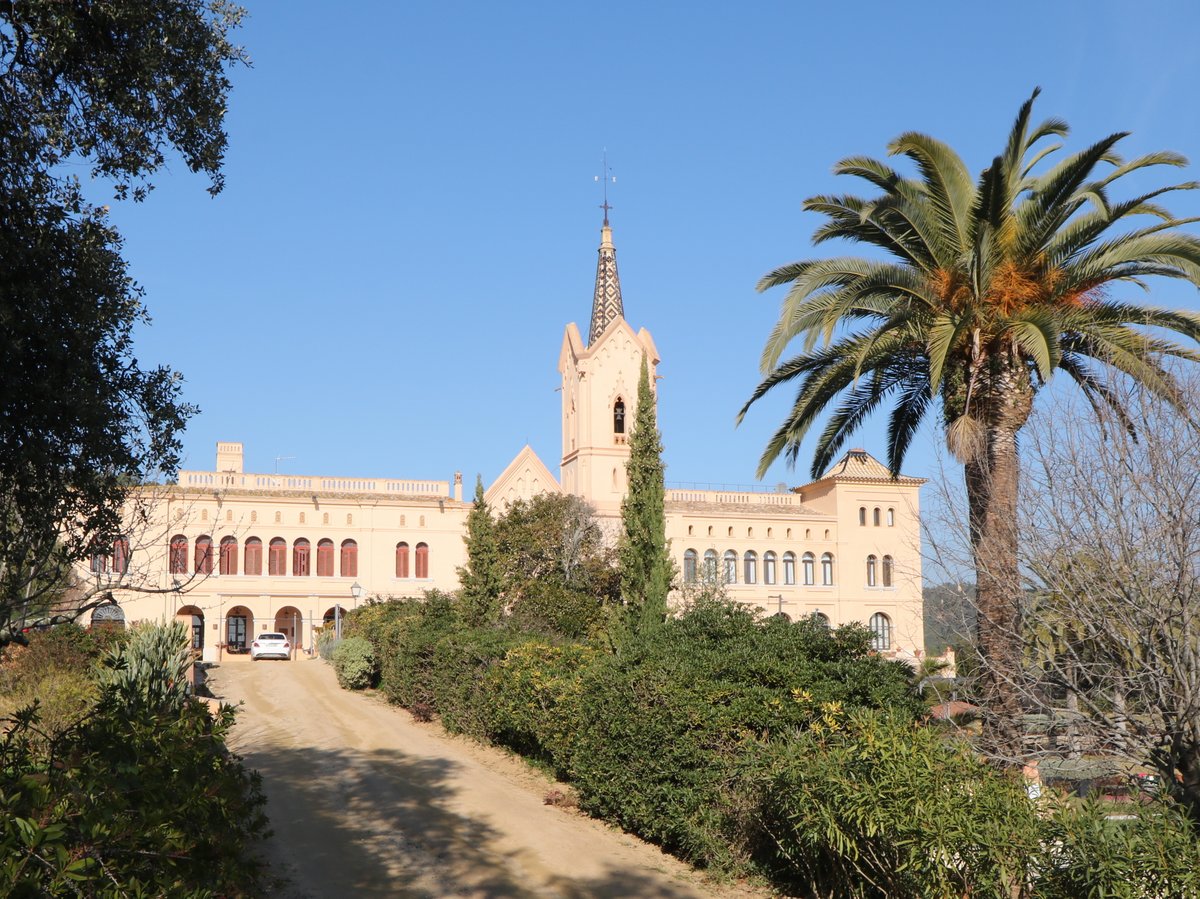An attempt to “do America” (hacer Americas) was not a dream but a beginning of adulthood for many young Catalans hailing from small seaside villages in the 19th century. Observing their compatriots leave for Columbia, Argentina or Puerto Rico only to come back two decades later with incredible wealth, many youngsters naturally wanted to follow suit.
Spaniards often “did America” in the 18th, 19th and the beginning of the 20th century, making their fortunes on trading of tobacco, textiles, cork, coffee, sugar and wheat—usually coupled with horrific exploitation of the New World’s local populace and slave trade. At some point, the language adopted a way to describe the new capitalist way of colonization profiteering—a lengthy explanation of “a person who went to the Americas, got wealthy and returned home to enjoy a life of luxury” was replaced with a short and simple “indiano”.
A house in which an indiano would enjoy his luxurious life was easy to distinguish among dozens of others, even by people not familiar with the phenomenon. If you encounter an opulent mansion that seems out of place in an ancient pueblo you’re visiting, but would fit right in on the Champs-Élysées, it’s very likely been built with the money made in a former Spanish colony.
The choice of the architectural style for an indiano home depended on the fashions of the day that dominated Europe during an indiano’s triumphant return home. In the mid-19th century, it was the Neo-Classical style, which was replaced at the end of the 19th century and the beginning of the 20th century by the Art Nouveau.
A colonial style is often mentioned in the context of indiano houses, but this implies that the architecture of the colonies was inspired by the colonizing state. With indianos, it’s the opposite—led by the nostalgia for their youth spent in South America, wealthy owners often commissioned houses “like over there”. Today, there is no need to travel further than Spain to see the houses the bourgeoisie in Cuba or Puerto Rico would build for themselves across the ocean.
Here are some telltale exterior and interior signs of an indiano house:
- The entrance: the owner’s initials;
- The exterior walls: medallions of famous colonizers, frescoes of sea voyages and exotic locales, reliefs of tobacco leaves, sugar cane and cacao;
- The back facade: a gallery with columns and arches;
- The garden: ancient god sculptures, fountains, ponds, palm trees and bamboo;
- Inside the house: opulent decor, high ceilings, wide staircases, a large salon on the ground floor with an obligatory fireplace, the furniture made from mahogany, bamboo and jacaranda.
To really immerse oneself in the subject matter of indianos, you would want to visit two villages on the Costa Brava—Begur and Lloret de Mar.
Indianos Walking Tour of Begur
Begur is an ideal spot to tour indiano houses—the whole walk around town takes under an hour, but there are over a dozen mansions of successful “American conquerors” to see. Such indiano density is unique on the Costa Brava coast. During the annual fair Fira d’Indians, current owners of some of the mansions open their doors to visitors and even hire actors to portray the imposing owners and the fussing servants of the era.
The Route of Nicolau Font in Lloret de Mar
Nicolau Font i Maig (1830-1908) is a famed indiano of Lloret de Mar who contributed much to his hometown upon his return from the Cuban town of Jaruco. He is forever remembered locally as Count Jaruco—one of the neighbourhoods in town, El Condado de Jaruco (“Jaruco County”), is even named after him.
The Art Nouveau house on Carrer Sant Carles, 16, is a former residence of Nicolau Font, built for him in 1877. In the 1980s, the house became a municipal property that today hosts the historical museum Can Font. To see first-hand the interior of a typical indiano house, you may visit the Font house on a Saturday by making an appointment at the local Maritime Museum.
Seven kilometres west from the town centre, right in the woods, stands the summer residence of Count Jaruco, the monastery Santuari de Sant Pere del Bosc, restored for him in 1890. Today, the monastery is a 5-star hotel and spa that proudly holds one “sun” from the Repsol guide. The square in front of the entrance is decorated with a monument to Nicolau Font, commissioned by his descendants in 1911 and created by the outstanding modernist sculptor Eusebi Arnau.
On your way to the monastery, you will need to make several stops— first, to admire the majestic monument to the Angel and the Art Nouveau houses attached to it. Second, to see the Oratory of Our Lady and to look at the cross marking the boundary of the municipality. The latter two were contributed to Lloret de Mar by the renowned Barcelona architect, the master Josep Puig i Cadafalch.









